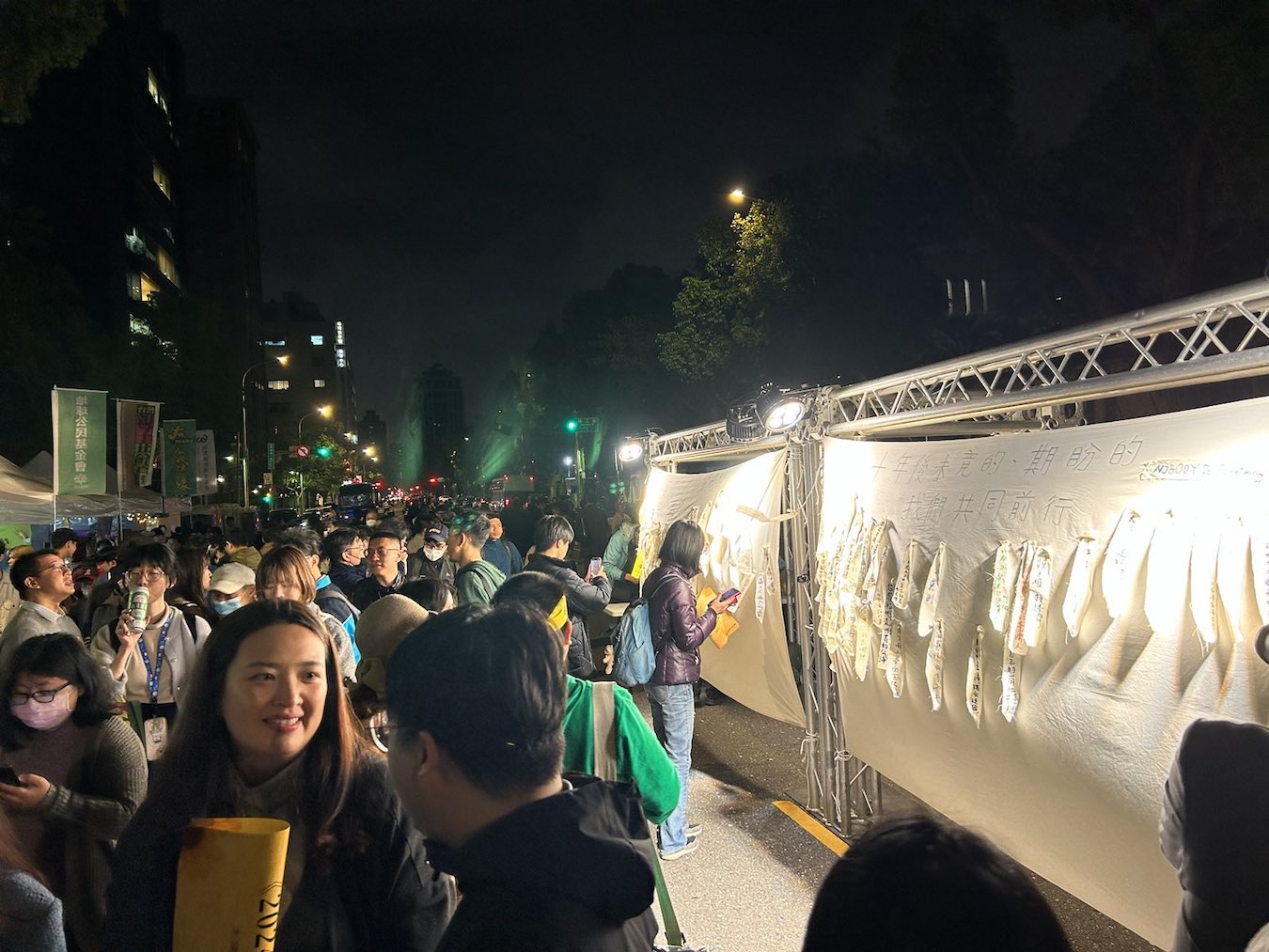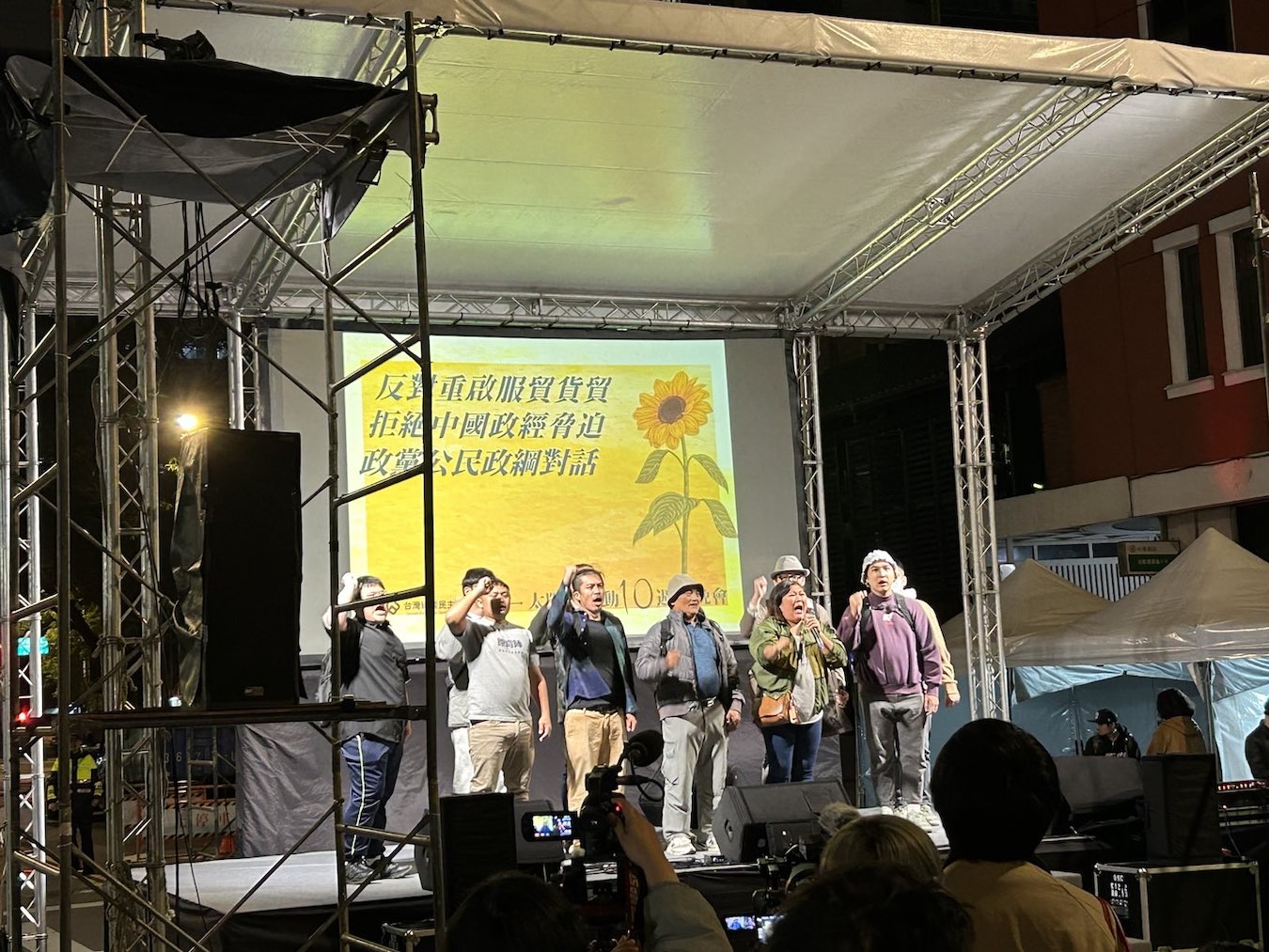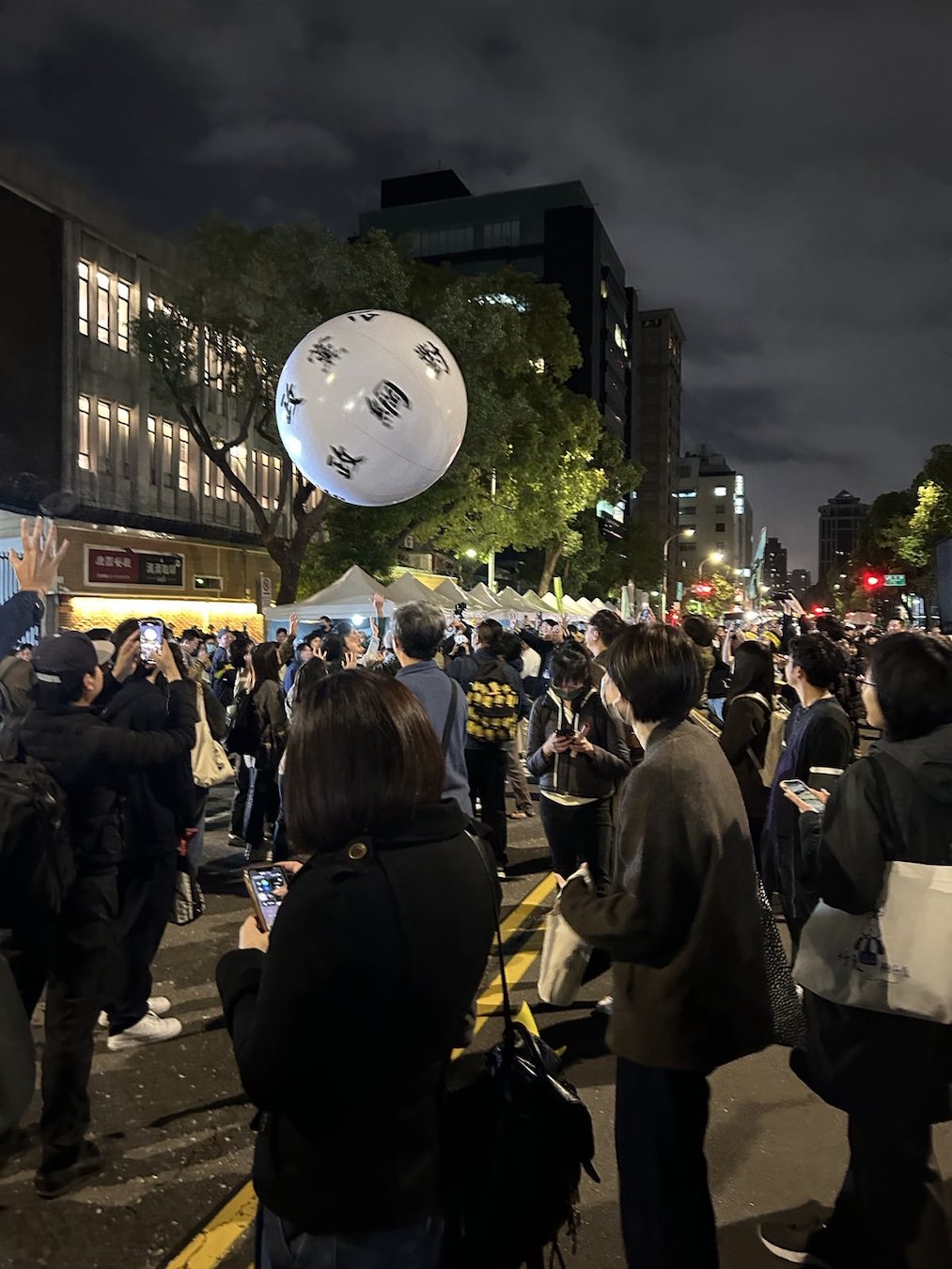by Brian Hioe
語言:
English
Photo Credit: Brian Hioe
THE TENTH ANNIVERSARY of the outbreak of the Sunflower Movement was commemorated yesterday with a demonstration in front of the Legislative Yuan in Taipei. Several hundred, possibly around 1,000, attended. The primary organizer of the event was the Economic Democracy Union (EDU), one of the key groups involved in the movement, which reconstituted itself in the movement’s aftermath.
 Board for ribbons for participants to leave messages. Photo credit: Brian Hioe
Board for ribbons for participants to leave messages. Photo credit: Brian Hioe
A significant part of the framing of the demonstration was, “There is no ‘War God,’ we are all students.” This reflects how the historical memory of the Sunflower Movement is still contended over, with political figures that emerged in the wake of the movement such as former Taipei mayor Ko Wen-je and former NPP chair Huang Kuo-chang having defected to the pan-Blue camp. “War God” was a nickname for Huang during his period as chair of the NPP. The emphasis, then, was on how the movement was larger than any single individual and so that the movement would not be remembered only in terms of the publicly visible stars that emerged from it.
Speakers did include movement leaders such as Lin Fei-fan and Dennis Wei. However, a number of the comments focused on neglected angles of the movement. For example, comments by Qin Yu-rong of the Awakening Foundation discussed how the movement was often remembered in terms of male leader figures, as a result of gendered coverage by the media, and how the Cross-Strait Services Trade in Services Agreement (CSSTA) failed to have protections for women in its provisions. Wei’s comments, to this extent, highlighted how the CSSTA lacked environmental protections and highlighted economic inequality as another social issue facing Taiwan at the time.
 Savungaz Valincinan on stage with Tama Talum and others. Photo credit: Brian Hioe
Savungaz Valincinan on stage with Tama Talum and others. Photo credit: Brian Hioe
Indigenous activist Savungaz Valincinan discussed the recent court victory for Indigenous hunting rights, clearing Indigenous hunter Tama Talum of charges. Valincinan was one of the key figures of the “Second Floor Slave Workers” during the Sunflower Movement and she took to the stage with Tama Talum himself.
Likewise, the legal charges faced by activists, including with regard to the charge into the legislature and attempted occupation of the Executive Yuan on the night of March 23rd, 2014 were also discussed. Ukrainian resident of Taiwan Mariia Makarovych highlighted the parallels between Ukraine and Taiwan. Hongkonger Candia Tong of Flow HK was originally scheduled to speak but was ill. Either way, participants at the demonstration shouted slogans in support of Hong Kong and Ukraine.
A board for participants to leave messages was left up by the legislature. Many messages criticized Huang Kuo-chang and Ko Wen-je. Indeed, although Lin Fei-fan criticized individuals who emerged from the movement but had since betrayed its spirit, other speakers such as EDU convenor Lai Chung-chiang and Wu Rwei-ren directly referenced Huang and Ko. The crowd jeered when this occurred. Since then, there has been a wave of online criticism of Huang.
To this extent, near the end of the demonstration, participants sought to lob a balloon ball representing the demands of the movement into the legislature. But this was unsuccessful in getting over the fence of the legislature and eventually seized by police.
 Attempts to lob a balloon representing the demands of the movement into the legislature. Photo credit: Brian Hioe
Attempts to lob a balloon representing the demands of the movement into the legislature. Photo credit: Brian Hioe
The movement was termed mostly successful by Lai in his speech. At the same time, the CSSTA has been reintroduced as an idea in Taiwan’s political discourse by none other than Ko Wen-je, as a result of which the KMT has also returned to advocating for the idea. In this way, some of the salient issues of the movement are still up in the air. Paradoxically, however, many young people support Ko today, perhaps due to lacking awareness of what his stances on cross-strait issues are.
Yet the world is a very different place a decade later. One notes that the Sunflower Movement took place only two years into the political administration of Xi Jinping–one had not yet seen what has taken place in the years since in Xinjiang and Hong Kong. And while the KMT was then able to lean into the claim that Taiwan’s political and economic future lie with China, rising international cautiousness of China internationally has not gone unnoticed in Taiwan.
The Sunflower Movement offers a historical precedent as to resistance against threats to Taiwan’s democracy, then. And just as the participants in the 1990 Wild Lily Movement laid the foundations for future youth movements in Taiwan, efforts by post-Sunflower activists to educate and train younger generations can perhaps be vital in engendering future resistance in Taiwan.

